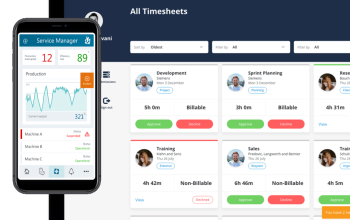Natural Language Processing (NLP) is an area of artificial intelligence that uses computer programs to recognize and comprehend human languages.
NLP techniques are utilized in numerous real-world applications, including speech recognition and transcription. Furthermore, they can also be applied to artificial intelligence solutions like chatbots.
Since NLP originally served to facilitate dictation and translation, its capabilities have expanded into more sophisticated machine learning techniques allowing AI devices and services to communicate more easily with humans.
Syntactic Analysis
Syntactic analysis is a key part of natural language processing, helping us comprehend both the logical meaning of sentences and their grammatical structures.
Understanding language is critical for computers as words have many different interpretations and there are countless combinations to arrange into sentences.
Word order and stopword removal can drastically change the meaning of a sentence, making basic lexical analysis hard to decipher. Stemming and lemmatization will alter its grammar as well.
Syntactic Parsing has long been one of the central tasks in computational linguistics and research has been ongoing since the advent of computers in the 1950’s. As a formalism it can be divided into two classes – dependency grammars and constituency grammars.
Semantic Analysis
Semantic analysis is a form of natural language processing which seeks to analyze text in order to interpret its meaning. This involves using various processes, including lexical semantics, parsing and context analysis as well as grammar rules and roles analysis to capture a word’s or phrase’s true meaning in context of any text document.
The initial step in text analysis involves lexical semantics, or retrieving dictionary definitions of words present in a text, before parsing is carried out to detect grammar rules and elements such as clauses. Subsequently, a tree-like structure called a parse is generated which shows their syntactic relationships.
Relationship extraction is a fundamental task of machine learning models, as it requires identifying and extracting entities such as people, places and companies connected through some semantic category – such as working at, living in or being CEO of.
Morphology
Morphology is the study of how words are formed and their meaning can change over time, an integral component of natural language processing and can help you expand your vocabulary.
Morphology, on the other hand, studies the smaller units of meaning within language such as words, parts of speech and implied context.
Morphology studies the structure of words as well as other linguistic elements like prefixes and roots. Morphology can help analyse new words as well as unravel complex grammar patterns.
Vocabulary
Natural language processing involves the transformation of raw text into meaningful representations that can be utilized by computer systems. This involves analyzing various aspects of natural language such as syntax, semantics and morphology to produce useful results for computer processing systems.
Vocabulary refers to the collection of words and tokens found within a dataset, making up its vocabulary. NLP must be capable of mapping these discrete items onto numerical features so neural networks and machine learning models can take full advantage of them.
Deep learning algorithms use vectors to represent numerical features; each row or column represents one word.
Each word in the dataset is assigned a numerical value based on its frequency in order to enable arithmetic operations without having to directly deal with raw words.
AllenNLP provides a Vocabulary class to store vocabulary items and link them with their numerical values for better machine learning with words and results that humans can comprehend.




